Headless Dvarapala
In Siem Reap we visited Preah Khan temple late in the evening after Ta Prom. Preah Khan – built for Jayavarman VII late 12 Century (1191). Like many of the temples in Angkor this temple has a foundation stone which has an amazing amount of information about the temple and life of the King and his subjects. It is believed Preah Khan is built on an area where a major battle was fought and won against the Chams.
Preah Khan Temple is believed to have been a Buddhist University, with over 1,000 teachers, dancers, and almost 100,000 attendants and servants. All recorded on the Stela. Enormous wealth – gold, silver, gemstones, pearls and a cow with gilded horns.
Outside the doorway of the entrance gopura at Preah Khan stands a Dvarapala, these are guardian figures or gate keepers in Asian architecture usually carrying some sort of weapon. They vary from being very plain like this one to being very ornate creatures. The two surviving Dvarapala at Preah Khan unfortunately both are headless. By comparison above – intact sword carrying Dvarapala at Banteay Kdei.
Inside the temple, fairly dark, light coming from the doorway cutting the darkness. Carvings and engravings are still visible on some temple walls, softened and worn with age. Notice the tiled roof finish on flat Khmer temples of the Angkor period (Ta Prom), they look like and are shaped like tiles, however they are carved from stone, not made from clay.
Central Tower – Preah Khan
An ancient moss-covered Stupa sits in the central tower at Preah Khan, on the walls, dots or round marks clearly visible against the green moss. The marks show where the wall were once covered in bronze plate.
The doorways above have a rough unfinished look. It is believed the outside of the central sanctuary also covered in bronze plate, which now of course has long since disappeared. Imagine how spectacular it must have looked.
Headless Statues
The East Gate has three entrances each with a tower, the top of the towers shaped very much like the gate towers of Angkor Wat. The side entrances are narrow probably for pedestrian use only, whilst the middle doorway would allow a horse and cart through. Leading to the gate is a Naga bridge with most of the statues headless. Giant Garuda (mythical bird man) sculpted in stone, five meters high and spaced about 50 meters apart on the inner wall are very impressive.
Below on the left, a curious two-storey building with closely spaced rounded columns, one of only three found in Angkor, this one at Preah Rup the best preserved.
The purpose of this building is unknown and up for conjecture as there are no means for access to the second storey. Perhaps wooden stairs were in use, long since decayed and rotted away. Perhaps used for storage purposes? Who knows?
Gopura and tiled roof gallery,despite their age, sections of the ruins still give the impression of solidarity.
The pediment above this door represents a scene of the Battle of Lanka from the ramayana.
The building/facade above has quite an elegant appearance. Can anyone tell me what this building is? The temple layouts get quite confusing after a while. At the end of this day I was quite ‘templed out’!
More to see to-morrow……
Related Posts:
- Giant strangler fig crushes gallery ta prohm
- Royal green square elephant terrace leper king terrace
- bayon kingdom of kings siem reap
- Angkor Thom|faces,kings,gods and demons-siem reap
- lake tonle sap floating villages
- Sankae river boat cruise stung sangkae river
- Wat Banan Battambang Province
- Sightseeing by tuk tuk the province of Battambang
- fun in the sun rural countryside battambang province
- fast and furious ride on a bamboo train cambo dia
- potters pots and pottery the province of chhnang cambodia
- Udong Stupas – intriguing burial sites
- Garment factory workers in the rain Phnom-Penh
- Kompong-speu waterfall area Kirirom national park
- verdant green pine forest kirirom national park
- traditional music pich nil cambodia
- spirit houses pich nil mountain pass
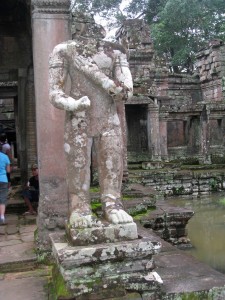
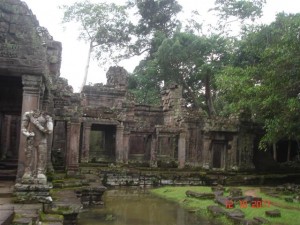
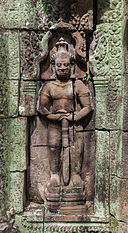
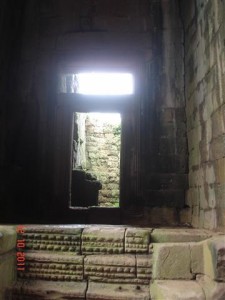
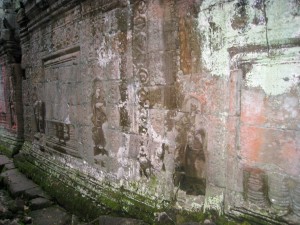
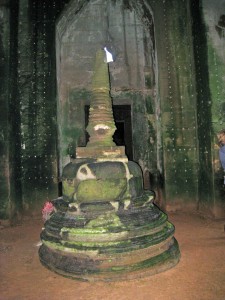
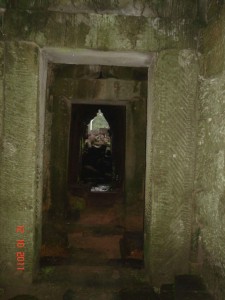
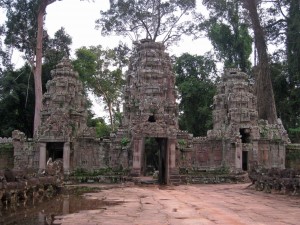
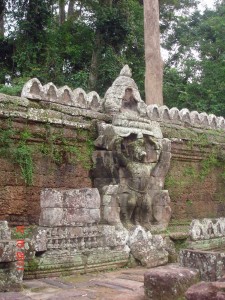

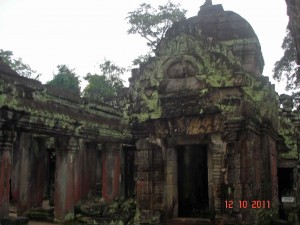
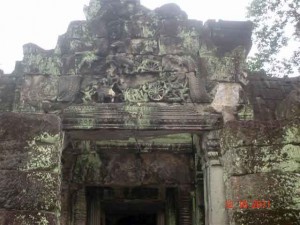
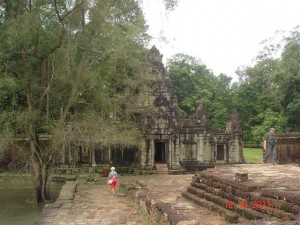
Speak Your Mind